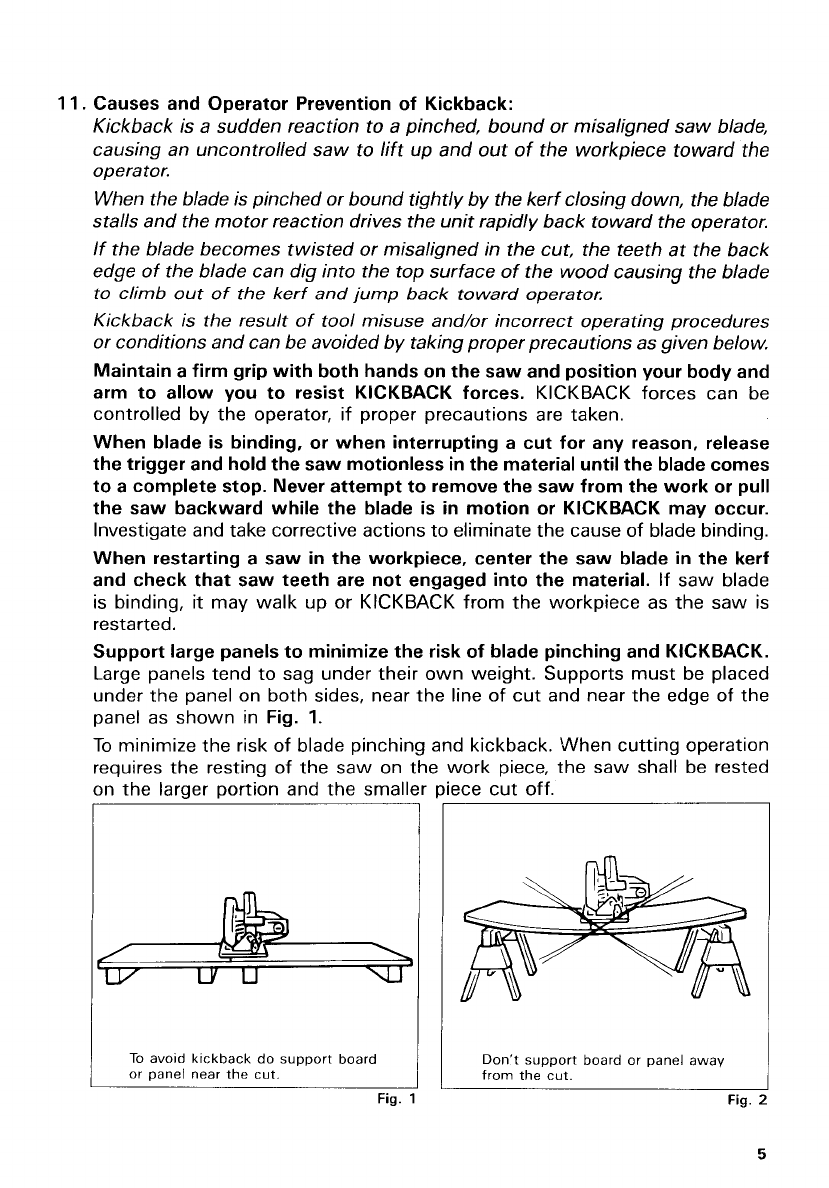
11.
Causes and Operator Prevention
of
Kickback:
Kickback is a sudden reaction to a pinched, bound or misaligned saw blade,
causing an uncontrolled saw to lift up and out of the workpiece toward the
opera tor.
When the blade is pinched or bound tightly by the kerf closing down, the blade
stalls and the motor reaction drives the unit rapidly back toward the operator.
If the blade becomes twisted or misaligned in the cut, the teeth at the back
edge of the blade can dig into the top surface of the wood causing the blade
to climb out of the kerf and
jump
back toward
operator.
Kickback is the result
of
tool misuse and/or incorrect operating procedures
or conditions and can be avoided by taking proper precautions as given below.
Maintain a firm grip
with
both hands on the saw and position your body and
arm to allow you to resist KICKBACK forces. KICKBACK forces can be
controlled by the operator, if proper precautions are taken.
When blade is binding, or when interrupting a cut for any reason, release
the trigger and hold the saw motionless
in
the material
until
the blade comes
to a complete stop. Never attempt to remove the saw from the work or pull
the saw backward while the blade is
in
motion or KICKBACK may occur.
Investigate and take corrective actions to eliminate the cause of blade binding.
When restarting a saw
in
the workpiece, center the saw blade
in
the kerf
and check that saw teeth are not engaged into the material. If saw blade
is binding,
it
may walk up or KICKBACK from the workpiece as the saw is
restarted.
Support large panels to minimize the risk
of
blade pinching and KICKBACK.
Large panels tend to sag under their own weight. Supports must be placed
under the panel on both sides, near the line of cut and near the edge of the
panel as shown
in
Fig.
1.
To minimize the risk of blade pinching and kickback. When cutting operation
requires the resting of the saw on the work piece, the saw shall be rested
on the laraer Dortion and the smaller
To
avoid kickback do support board
or
panel near the cut.
Fig.
'
ece cut off.
Don't support board
or
panel away
from the cut.
Fig.
:
5


















